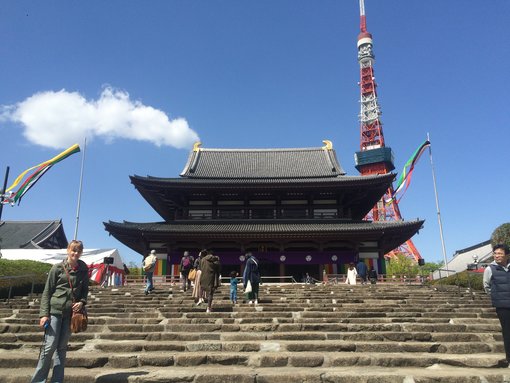Ramen is a type of noodle made from wheat flour and served in a meat or vegetable-based broth. Meat, eggs, seaweed, and other ingredients are often added for flavor and texture. Soba noodles are made from buckwheat and can be served hot or cold. They are often accompanied with soy sauce, wasabi, and scallions. Udon noodles are made from wheat flour and are thicker and chewier than ramen and soba. They are often served in a hot broth with tempura, meat, egg, and other ingredients. Each type of noodle has its own distinctive flavor and texture, and they are popular in Japanese cuisine in both casual dishes and more elegant dishes.
Ramen: It is undoubtedly one of the most popular foods in Japanese cuisine. This dish is inseparable from the country's culinary world, and has become a symbol of Japanese culture. Although ramen is believed to have its origins in China, it was in Tokyo in the early 20th century that it became popular and an essential part of Japanese culinary culture.

Ramen is made with wheat noodles, accompanied by a broth that varies in flavor and ingredients depending on the region of Japan where it is prepared. Popular types include miso ramen, tonkotsu (pork bone) ramen, shoyu (soy sauce) ramen, spicy ramen, chicken ramen, and tsukemen (sauce noodles). Each type of ramen has its own unique combination of ingredients, making for an exciting and varied dining experience for diners. Miso ramen, for example, is known for its rich and creamy flavor, while tonkotsu ramen is thicker and has a strong pork flavor. On the other hand, shoyu ramen is lighter and focuses on the flavor of soy sauce. In summary, ramen is an iconic dish of Japanese cuisine that is worth trying on any visit to the country. Its popularity and variety of flavors and ingredient combinations make it an exciting and delicious dish for any palate.
Soba noodles: Made from buckwheat, they are a delicious option in Japanese cuisine. This dish is typically served cold with a salty tsuyu sauce, and is accompanied with scallions, minced nori seaweed, and wasabi, giving it a unique flavor and texture.
Diners can also choose to add vegetable or seafood tempura to further enhance the flavor. There are two main variants of soba: zaru soba, which is served cold and presented on a bamboo plate; and kake soba, which is served hot and dipped in a soupy broth. Both options are equally delicious and popular throughout Japan. Soba noodles have a chewy texture that makes them different from other types of Japanese noodles. In addition, its unique flavor and versatility to be combined with different ingredients make it a perfect option for those looking to explore the rich Japanese cuisine.
Udon noodles: They are a delicious option in Japanese cuisine. They are distinguished by their thickness and smooth texture, which makes them different from other Japanese noodles. Like soba, udon noodles can be enjoyed both hot and cold. Notably, udon noodles have a long history in culinary culture.

They are said to have originated in China over 1,300 years ago, and were then introduced to Japan about 1,000 years later. During this time, the artisans have been iterating on the craft of making udon noodles, perfecting their technique to achieve a perfectly smooth texture. Udon noodles can be enjoyed in a variety of ways. One of the most popular dishes is hot udon, served in a dashi (fish broth) and a soy sauce broth called kakejiru, or along with a Japanese curry broth, giving it a unique flavor and aroma. In summer, cold udon with a light broth is also very popular. All in all, udon noodles are a great option for those looking to enjoy a delicious and authentic meal in Japan. Its versatility to be served both hot and cold, together with its unique texture, make it an essential dish during any visit to Japan.







